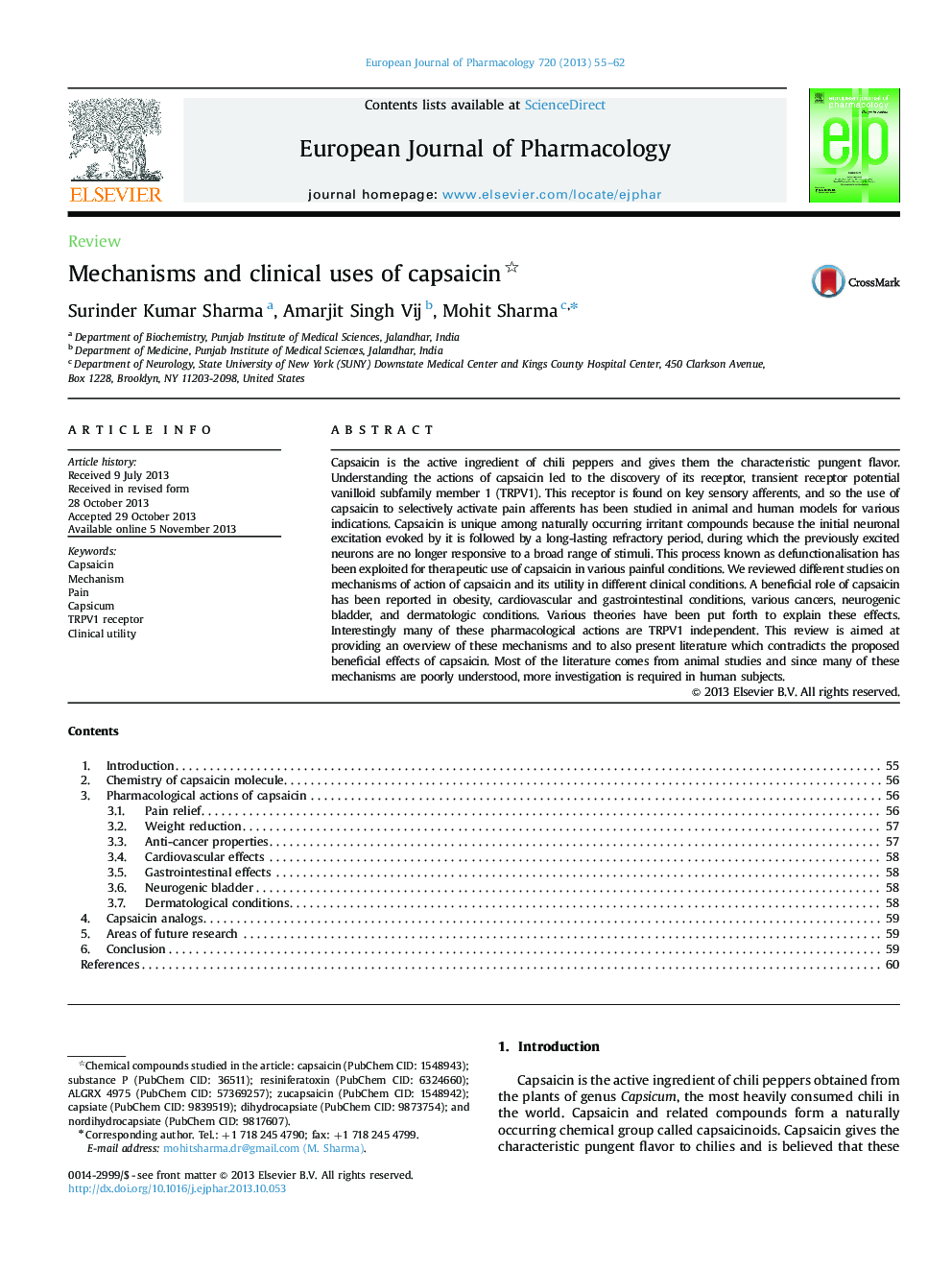| کد مقاله | کد نشریه | سال انتشار | مقاله انگلیسی | نسخه تمام متن |
|---|---|---|---|---|
| 2531890 | 1558961 | 2013 | 8 صفحه PDF | دانلود رایگان |

Capsaicin is the active ingredient of chili peppers and gives them the characteristic pungent flavor. Understanding the actions of capsaicin led to the discovery of its receptor, transient receptor potential vanilloid subfamily member 1 (TRPV1). This receptor is found on key sensory afferents, and so the use of capsaicin to selectively activate pain afferents has been studied in animal and human models for various indications. Capsaicin is unique among naturally occurring irritant compounds because the initial neuronal excitation evoked by it is followed by a long-lasting refractory period, during which the previously excited neurons are no longer responsive to a broad range of stimuli. This process known as defunctionalisation has been exploited for therapeutic use of capsaicin in various painful conditions. We reviewed different studies on mechanisms of action of capsaicin and its utility in different clinical conditions. A beneficial role of capsaicin has been reported in obesity, cardiovascular and gastrointestinal conditions, various cancers, neurogenic bladder, and dermatologic conditions. Various theories have been put forth to explain these effects. Interestingly many of these pharmacological actions are TRPV1 independent. This review is aimed at providing an overview of these mechanisms and to also present literature which contradicts the proposed beneficial effects of capsaicin. Most of the literature comes from animal studies and since many of these mechanisms are poorly understood, more investigation is required in human subjects.
Journal: European Journal of Pharmacology - Volume 720, Issues 1–3, 15 November 2013, Pages 55–62